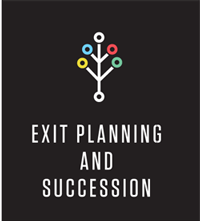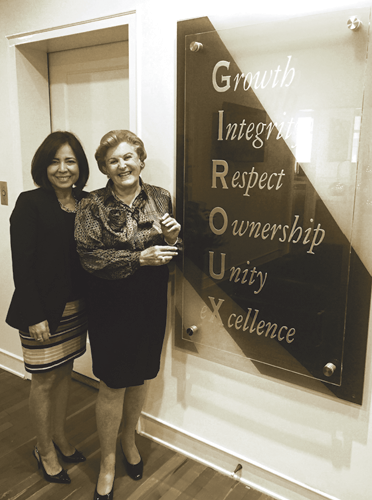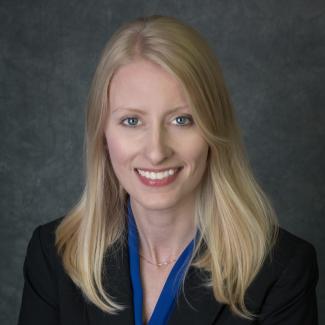Exit Planning and Succession II - An Employee Partnership
Giroux Glass leadership looks to staff to safeguard company's future
Editor's Note: This article and the feature Eight Disciplines of a Successful Exit mark part two of Glass Magazine’s multi-part Exit Planning and Succession series. The first in the series is, “A Successful Exit: Capture Business Wealth and Pass the Baton to the Next Generation;” the next article in the series will run in the May issue. If you have an exit or succession planning story to share, contact Editor Katy Devlin, kdevlin@glass.org.
 Anne-Merelie Murrell has long had a vision for her company, Giroux Glass. Under her leadership, Giroux has grown to become one of the nation’s top glazing contractors, with four locations and 204 employees, and a project portfolio that includes some of the highest profile buildings in the Western United States.
Anne-Merelie Murrell has long had a vision for her company, Giroux Glass. Under her leadership, Giroux has grown to become one of the nation’s top glazing contractors, with four locations and 204 employees, and a project portfolio that includes some of the highest profile buildings in the Western United States.
However, Murrell’s vision for the company goes well beyond the company’s growth and project success, and to how the company would continue to succeed after she retired.
Murrell, who served as CEO of Giroux Glass for 24 years after purchasing the company from its founder Louis Giroux in 1991, worked for nearly a decade to craft an exit and succession plan—one that kept her employees top priority. This plan included the creation of an Employee Stock Ownership Plan (ESOP) that allowed Murrell to gift her stock to employees over time, and a two-year search for a successor.
The exit plan

Murrell owned 100 percent of stock in Giroux Glass from the time of purchase until 2007, when Murrell enacted the ESOP exit plan. Through this process, Giroux employees became partners, and Murrell determined how her exit would ultimately benefit all of them, according to company officials.
Currently, Giroux is 14.5 percent employee owned, and set to be 100 percent employee owned by 2022, when Murrell will completely exit from the company as a shareholder. This trajectory allows time for the ESOP to be unleveraged—without debt. The more profitable Giroux Glass is, the more stock can be purchased. While working toward maintaining an unleveraged ESOP, Giroux Glass will be able to grow bonding capacity by continuing to strengthen its balance sheet, according to company officials. (See sidebar)
Consideration of transitioning Giroux to an ESOP company began for Murrell over 15 years ago, at which time she considered other transfer options, and reached out to dozens of experts and peers in the field.
“There are always options [when selling a business],” says Murrell. “You can either sell your company to an unknown individual, or to those who shared in your successes. I contemplated many years ago just selling, but I couldn't. Those who have been important to your life, growth and reputation, they should share in what they have created.”
Ultimately, Murrell’s decision to transfer Giroux to an ESOP and exit the company as a shareholder over time was due to her love of the company she, and those around her, had created. “I love Giroux,” says Murrell. “I love the projects we do. I want to see it grow.”
After establishing the ESOP as a way for Murrell to gift stock to Giroux’s employee-partners and help them diversify their qualified retirement accounts, she began looking into how ESOPs are based in a culture of ownership. In 2009, Murrell began educating her employee-partners to learn how to "think like an owner."
The success of Giroux employees goes hand-in-hand with the success of the company. Murrell believes that within an ESOP, if Giroux’s employee-partners understand that they have the ability to grow their investment, they will be more committed to contributing to the success of Giroux.
“When we saw the positive impact of ESOP companies with a culture of ownership on the profits and value of their companies, we knew we had a strong foundation of culture and the potential for the same or greater success for Giroux,” says Nataline Lomedico, current CEO and president of Giroux, explaining Murrell’s ultimate decision to adopt an ESOP for Giroux.
“It’s sensible to have an ESOP if planning a succession, if you’ve already entrusted your company to others” Murrell advises other industry CEOs. “I had confidence that people here knew how to grow what we started. Nothing makes me happier than passing along what is good and know it's going to be made better. These are the reasons I went to the ESOP.”
During the 15 years of considering and planning her exit and succession, Murrell was also busy with the day-to-day, closely involved with her employee-partners. While spending much of her life with Giroux, her thoughts on how to pass it on always dovetailed with thoughts of those who made Giroux a success.
“What is best for a company and for all personnel must always be considered in any business decision,” she says. “For instance, just because you're a son or daughter doesn't mean it’s in the best interest of the company for you to lead. Or, in some business cases, it might be better to sell. These are decisions companies must make. In the end, involvement with your partners is key. You must be working together to be successful.”
The succession plan
After Murrell developed a plan for transferring ownership of the business, she moved her attention to transferring leadership.
Murrell notified the employee-partners of Giroux on Dec. 31, 2012, that she would be stepping down as CEO as of Dec. 31, 2014.
“I knew the exit would come because I thought it was the best thing,” she says. “Two years [to find a replacement] was pretty fast, and maybe it was too fast. But after too much time you're just holding on. You must give them a chance to grow and expand.”
To help her manage the quick transfer, Murrell relied on outside consultants who came in quarterly to interview employees, offer feedback on necessary steps, and help develop Giroux’s management. In her search for a successor, Murrell also solicited feedback from clients, vendors, Giroux employees, peers, experts in construction, and successful CEOs of Fortune 500 companies, notes Barbara Kotsos, director of marketing and public relations, Giroux.
During the two-year transfer process, many people inside and outside of Giroux came to the floor as potential CEO candidates. Murrell held conferences and formed committees to choose her successor. “It’s important that everyone is on board. They all have to know how to handle it as a company,” she says.
As part of the interview process, Nataline Lomedico came to the floor. “She had great dedication, she’s intelligent, she knew the skills, and had energy and drive,” recalls Murrell.
With a 26-year career in the construction industry, Lomedico was hired as a controller for Giroux in 2001. After 15 years working under Murrell, Lomedico became president and CEO of Giroux Glass in January 2015.
Choosing a successor was only half of the succession process, however. Murrell worked for many months with Lomedico to integrate her into the leadership process before stepping down. From July 2014 to January 2015, she saw all of the typical work Murrell handled on a daily basis, and she and Murrell made decisions together. As of Jan. 1, 2015, however, Murrell put all decision making solely into Lomedico’s hands.
"Not seeing Anne-Merelie around the office after 15 years was a big transition,” says Lomedico. “A tremendous amount of work crossed my desk. I knew how to handle it, though, because Anne-Merelie has been coaching me since the day I met her."
Although Murrell, who now serves as Chairman of the Board, is still very hands-on and meets with Lomedico on a weekly basis for updates, she believes an exited CEO should step away from the day-to-day as quickly as possible.
“For anyone considering going from CEO to Chairman, understand that the new CEO is going to manage and have leadership. They don't need the old CEO around; they need room to expand on their own,” she says.
Murrell, who is now in her 80s, says she will fully exit the business and step down as chairman in 2022, when the company will be 100 percent employee owned. While Murrell continues to own a stake in the company, she will continue to be involved, she says. “I still own stock. And as long as I do, I get a thrill to see what my partners are doing. I am so proud,” she says.
What is an Employee Stock Ownership Plan?
Not to be confused with an Employee Stock Option Plan, an Employee Stock Ownership Plan, or ESOP, is the main form of broad-based employee ownership in the United States, according to the National Center for Employee Ownership. The NCEO explains employee ownership as “the ownership of a company, directly or indirectly, in part or in whole by some or all of its employees.” Ownership transfers from the sole owner to a broad cross-section of employees, from all levels of the company, generally through a formal plan offered by the employer.
Ultimately a retirement plan, an ESOP makes it possible for a company to contribute stock, or the money to buy its stock, to the plan for the benefit of the employees. The ESOP invests primarily in company stock and holds its assets in a trust, in accounts earmarked for employees, according to NCEO. Shares of stock vest over time before an employee is entitled to them, which is generally when the employee leaves the company. The U.S. Department of Labor’s Employee Benefits Security Administration oversees ESOPs.


